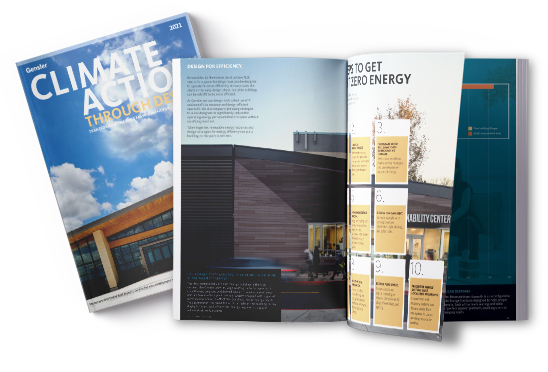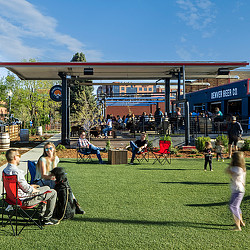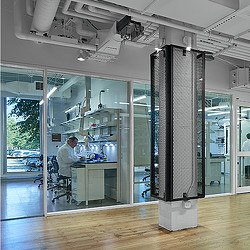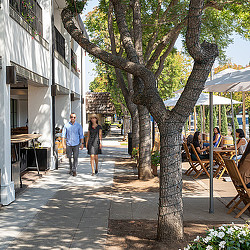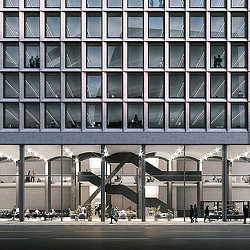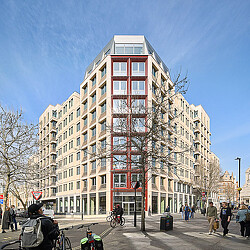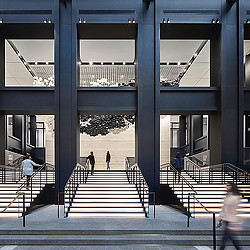THE ADAPTIVE REUSE REVOLUTION
Given that nearly two-thirds of the buildings that exist today will still exist in 2050, the path to design resilience must include an adaptive reuse strategy. Embodied carbon (the carbon released into the atmosphere through the harvesting, production, and transportation of materials) constitutes a growing share of a building’s life cycle impact. According to Architecture 2030, 49% of the total carbon emissions of global new construction between now and 2050 will come from material production and acquisition.
We must improve climate impact by extending the life of existing structures with reuse strategies.
EXTENDING THE LIFE OF WHAT’S ALREADY BUILT SAVES WASTE — AND MONEY.
By renovating existing buildings and repurposing spaces and materials, developers can decrease the amount of carbon associated with new materials, and they can reduce the amount of debris and waste going into landfills. According to the U.S. Environmental Protection Agency, deconstruction rather than demolition of a building can save 90% of a building’s materials.
Adaptive reuse strategies are also more cost-effective. Not only is adaptive reuse much cheaper than demolition and new construction, property owners can enjoy municipal incentives for converting their properties, some of which may have historic value. Additionally, reuse might speed local approval processes and minimize impacts on neighbors.
This practice helps us take a building that’s past its prime and renovate it for new purposes in line with contemporary technological and social needs. Adaptive reuse strategies can help create a future that’s climate-friendly.
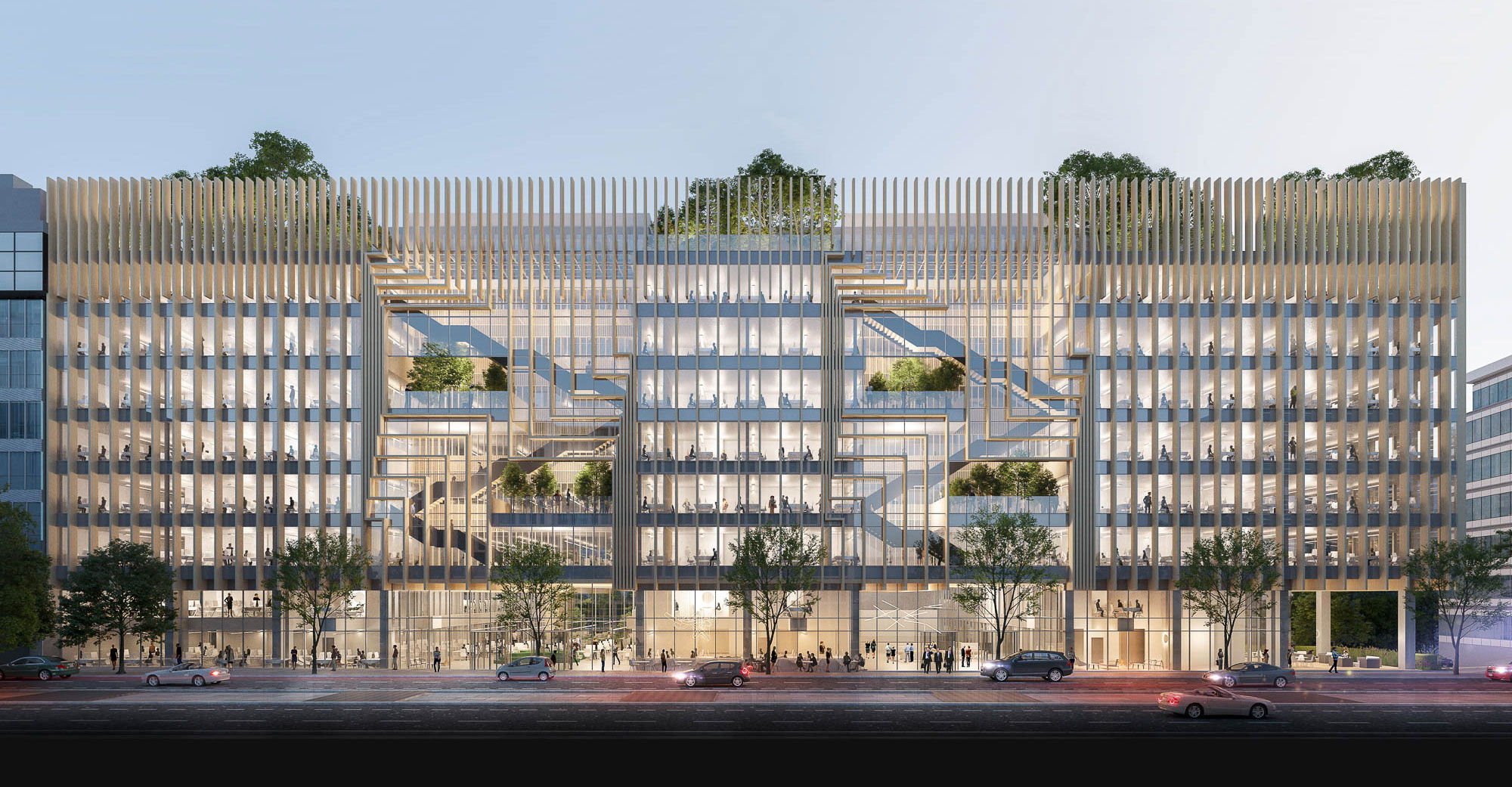
When it comes to reuse, scale matters. Just as the reuse of buildings can have a net positive effect on the environment, so too can reusing furniture and interior materials. When you extend reuse strategies to the neighborhood and city scale, the impact is amplified even more.
Here are some adaptive reuse strategies at various scales to help reach net zero embodied carbon goals:
Engage with vendors and processes that re-purpose material assemblies, furniture, and office equipment.
Appliances and electronics may not be as readily reusable or repairable as other products.
Sourcing locally can reduce transportation-related emissions, support local economies, and encourage reuse.
Create reduction strategies using tools like Whole Building Life Cycle Assessments (WBLCA)
Glass and steel are higher impact than brick, stone, and cross-laminated timber (CLT).
Carpet and demountable partitions and doors are more suited for reuse than drywall, linoleum flooring, and ceiling tile.
To maximize potential, anticipate future uses and design for flexibility and multi-use.
Building cores, including the slabs, façade, and roof, are often completely repurposable.
Evolving local climate demands play a big role in the consideration of enclosure upgrades.
Adaptive reuse strategies can revitalize communities and create more sustainable cities.
Partner with municipalities for neighborhood planning and infrastructure and net zero plans.
There may be historical, social, and cultural reasons to reuse buildings.
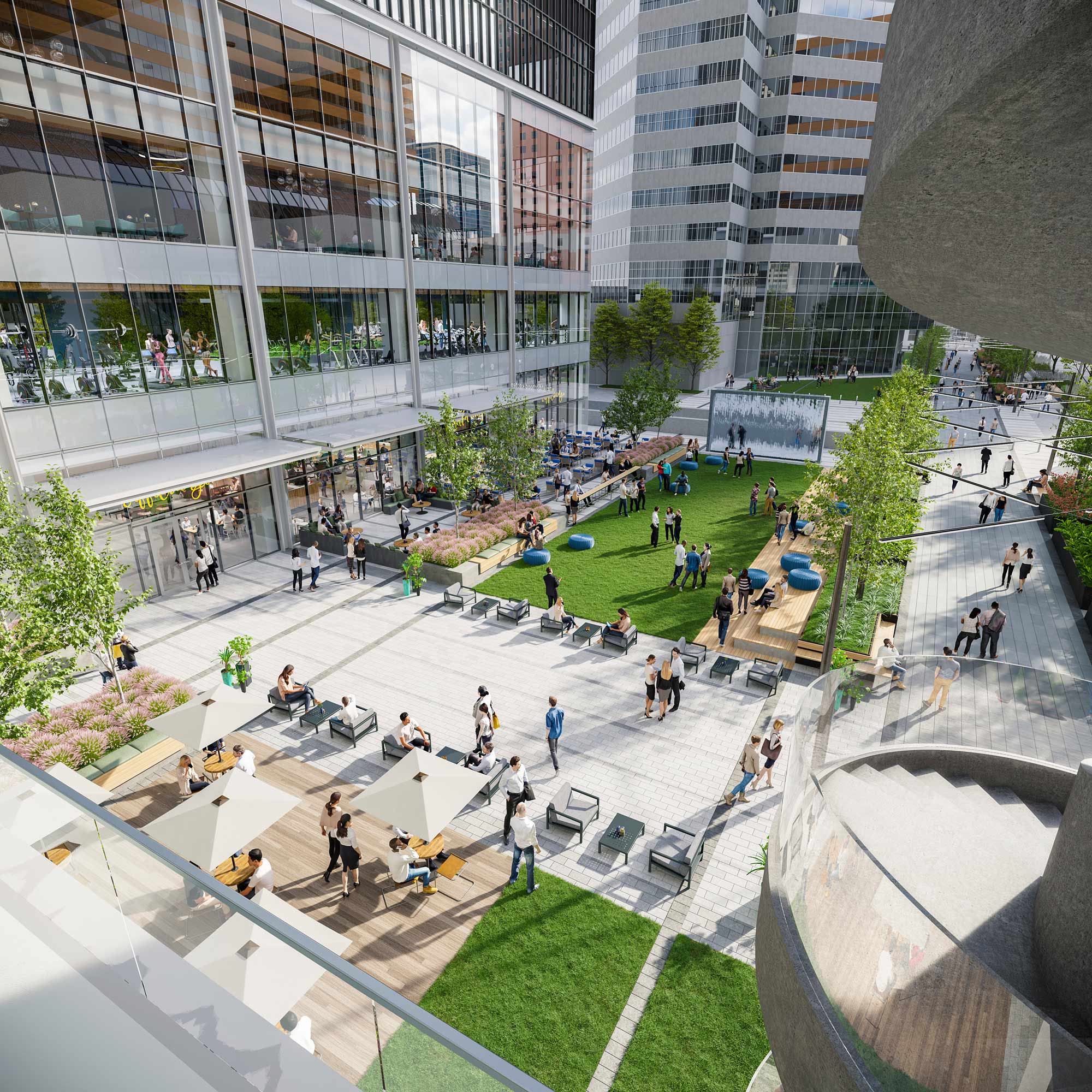
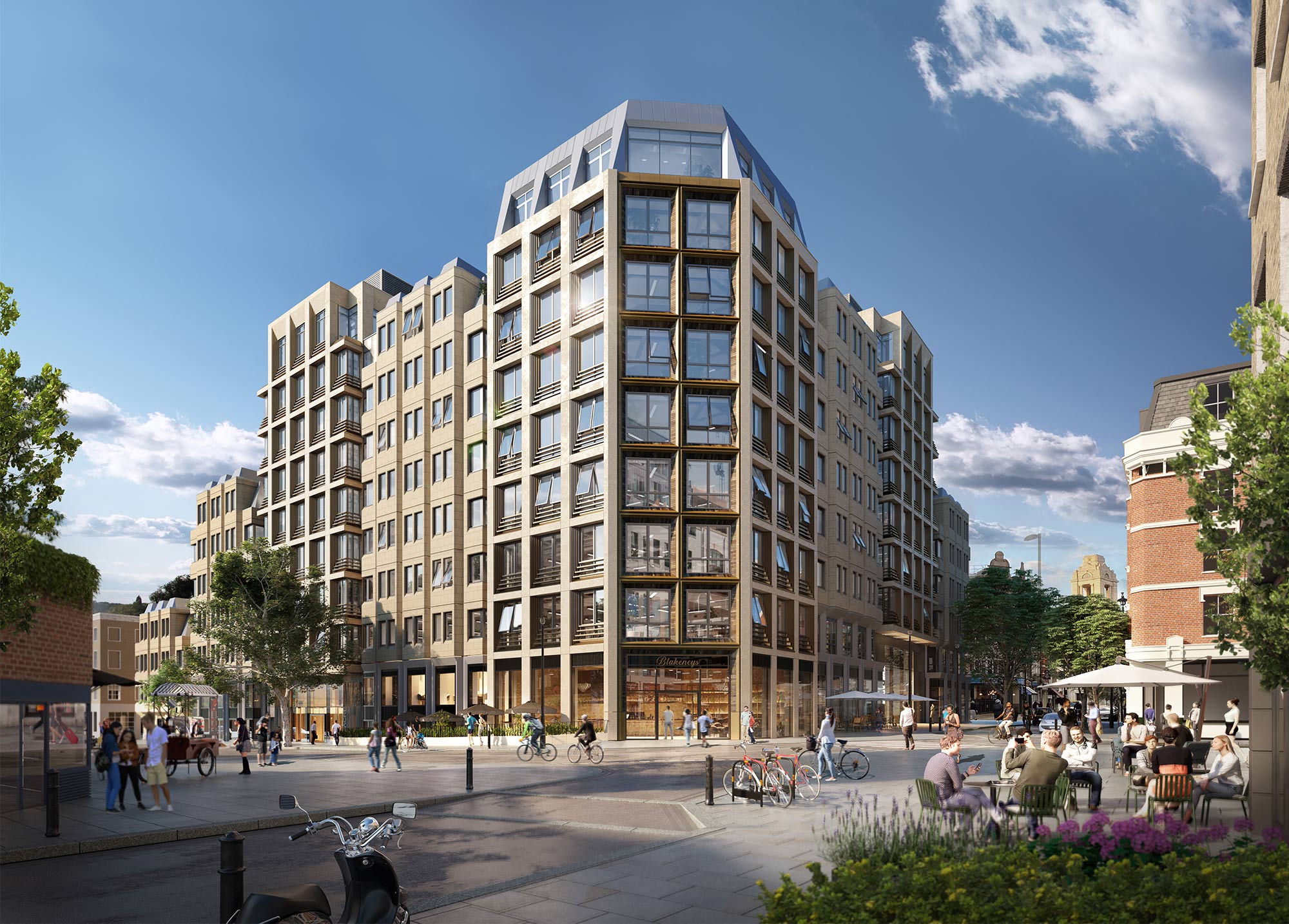
By repositioning this landmark Brutalist building in London’s Covent Garden, we were able to preserve more than 80% of the original structure and minimize the amount of energy and emissions used in the project. The repositioned building provides tenants with access to fresh air and greenery through operable windows and landscaped outdoor terraces. It achieved BREEAM Excellent and WELL Platinum recognition — top assessments of its sustainable performance.
